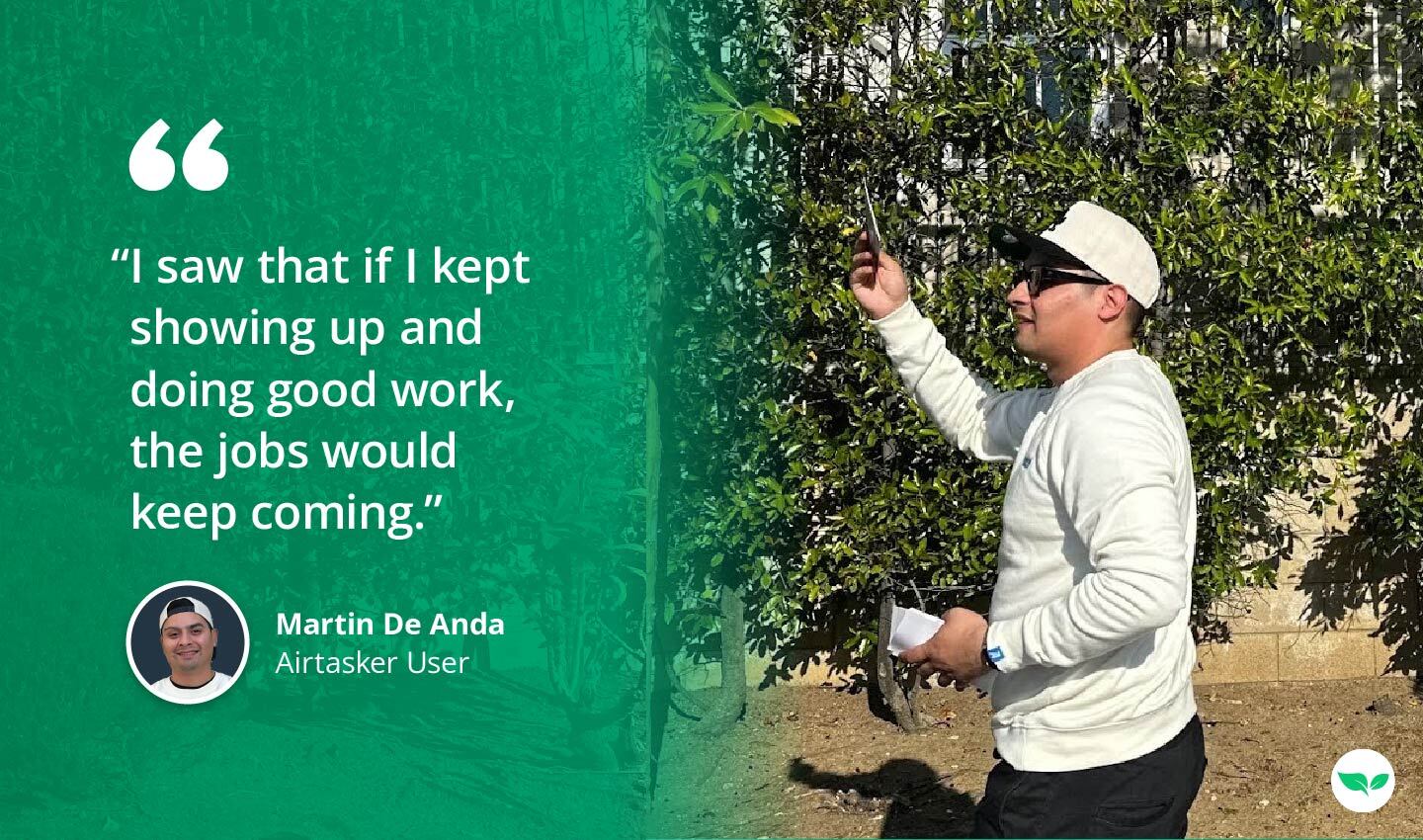This “Tasker” Makes $1,000/Week Handing Out Flyers for Businesses
Martin De Anda wasn’t planning on starting a business — he just needed some extra cash. But one flyer gig turned into steady weekly income. Here’s how he does it.
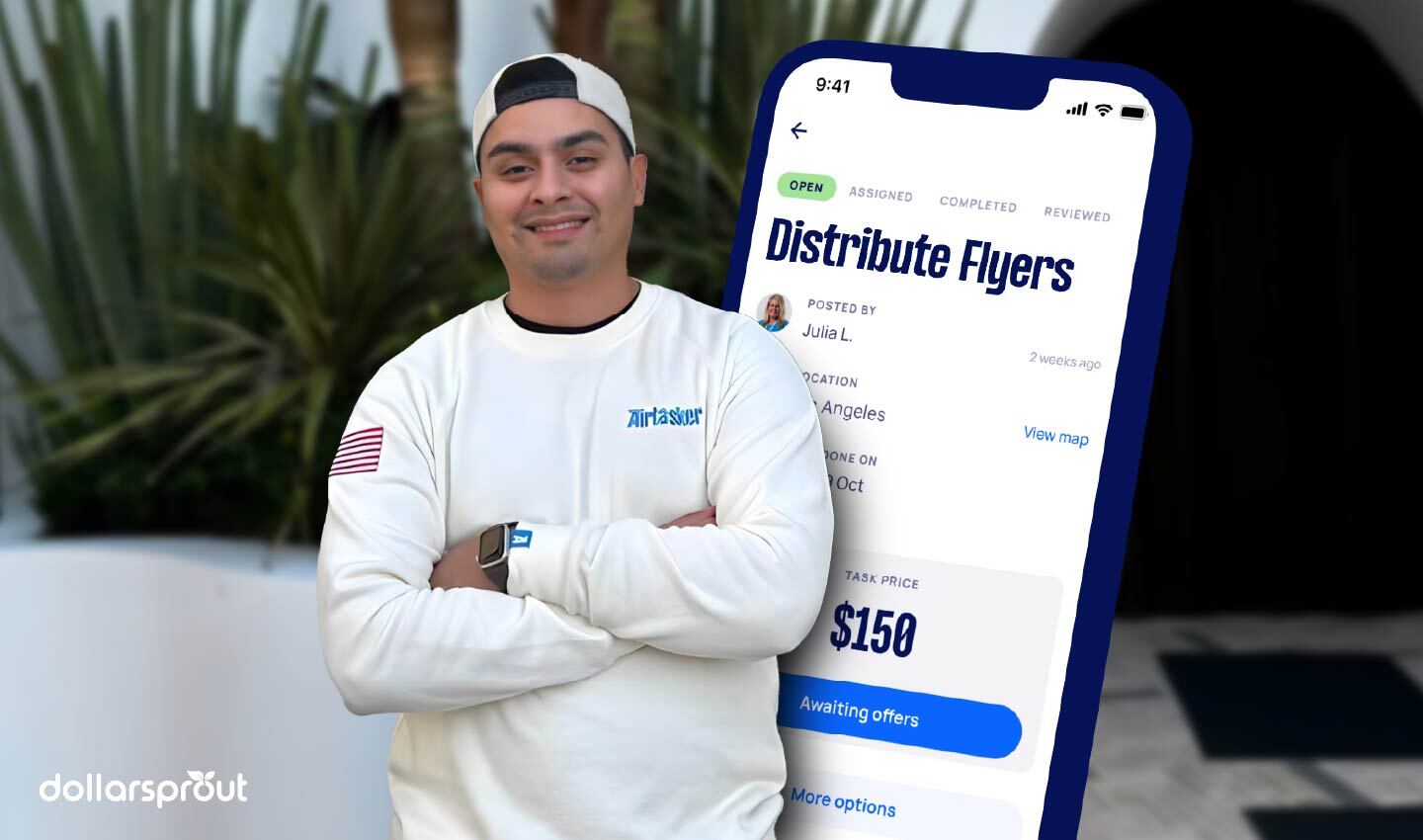
Martin De Anda took a flyer gig on a whim. He figured it’d be a one-off — a quick job posting flyers around Los Angeles for a small business that found him on Airtasker, a local gig app where people get paid to complete odd jobs nearby.
But that one task led to another. Then another. Before long, Martin was earning steady money flyering full-time — and today, he brings in around $1,000 a week, occasionally looping in others to help keep up with demand.
Here’s how he turned a simple errand into a reliable income stream — and why his success might be more replicable than you’d think.
From One-Off Gig to Full-Time Work
Before Airtasker, Martin had bounced between jobs — from underwriting truck loans to working as a phlebotomist and handling customer service calls. He said he had always been willing to do whatever it took to make ends meet, but none of it felt like something he could build on long-term.
That changed about two years ago, when he stumbled across a task on Airtasker offering a few bucks to hand out flyers for a small business in Los Angeles.
The app connects people with local gig jobs — everything from moving help and yardwork to flyer distribution and delivery runs.
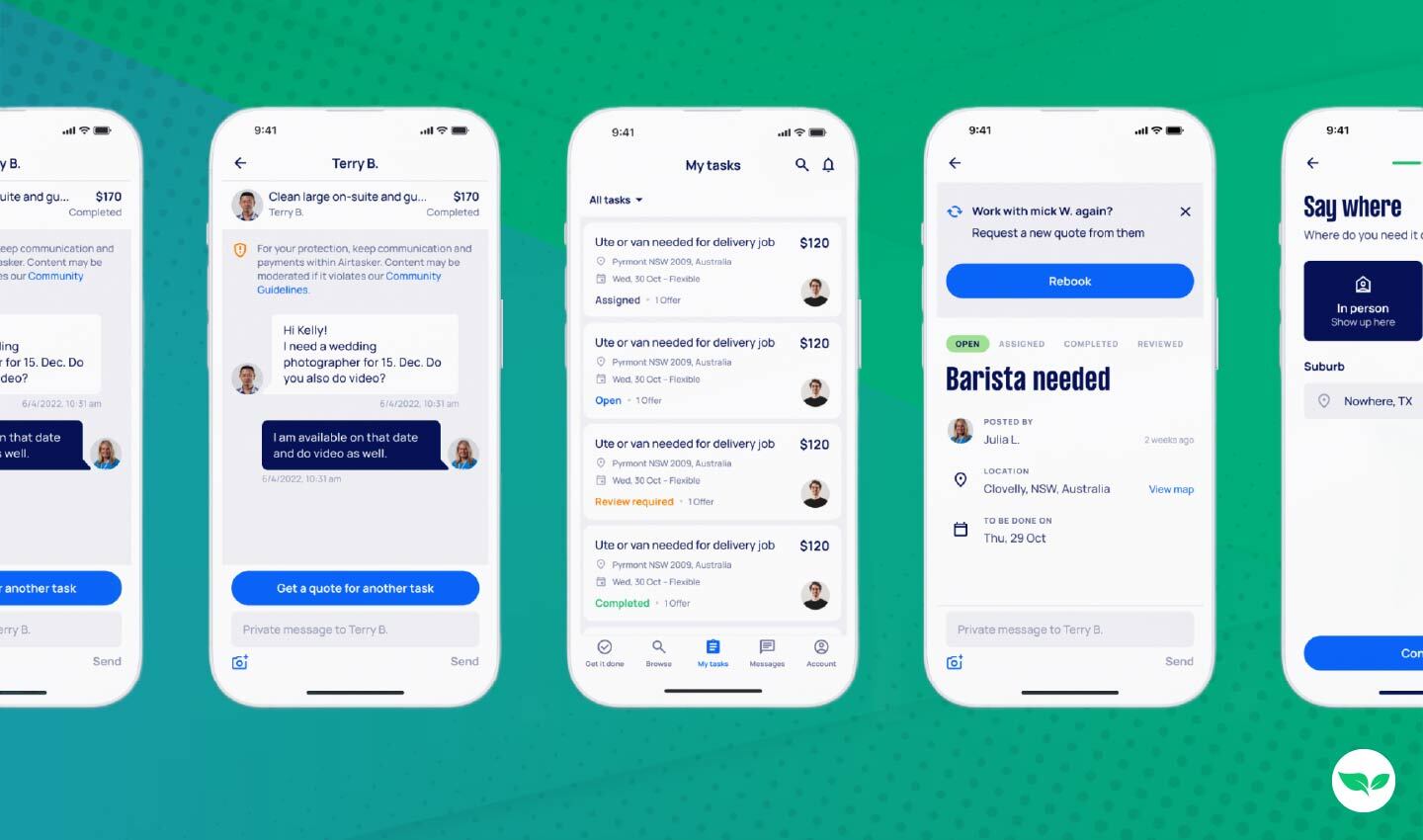
“I figured, why not?” he said. “I had a couple free hours and thought it’d be easy money.”
It was — but more importantly, it led to more. The client hired him again the following week. Then another small business reached out. Within a couple of months, Martin had completed more than a dozen flyering tasks and realized there was far more demand than expected — and not many people doing it well.
“That’s when I started to take it seriously,” he said. “I saw that if I kept showing up and doing good work, the jobs would keep coming.”
What started as a way to earn an extra $100 or $200 a week quickly began to grow. By the time he was approaching $1,000 a week, Martin wasn’t just taking on more gigs — he was starting to build a system around it. Most side hustles never scale this far — but for Martin, there was enough demand to start thinking bigger.
Related: 44 Easy Ways to Make Money Fast
How He Earns $1,000 per Week
Most of Martin’s weekly income comes from one thing: flyer distribution. He typically charges about $100 per 500 flyers, with some gigs paying more depending on the location or turnaround time. On a good week, he completes 10 to 12 tasks, earning between $900 and $1,200.
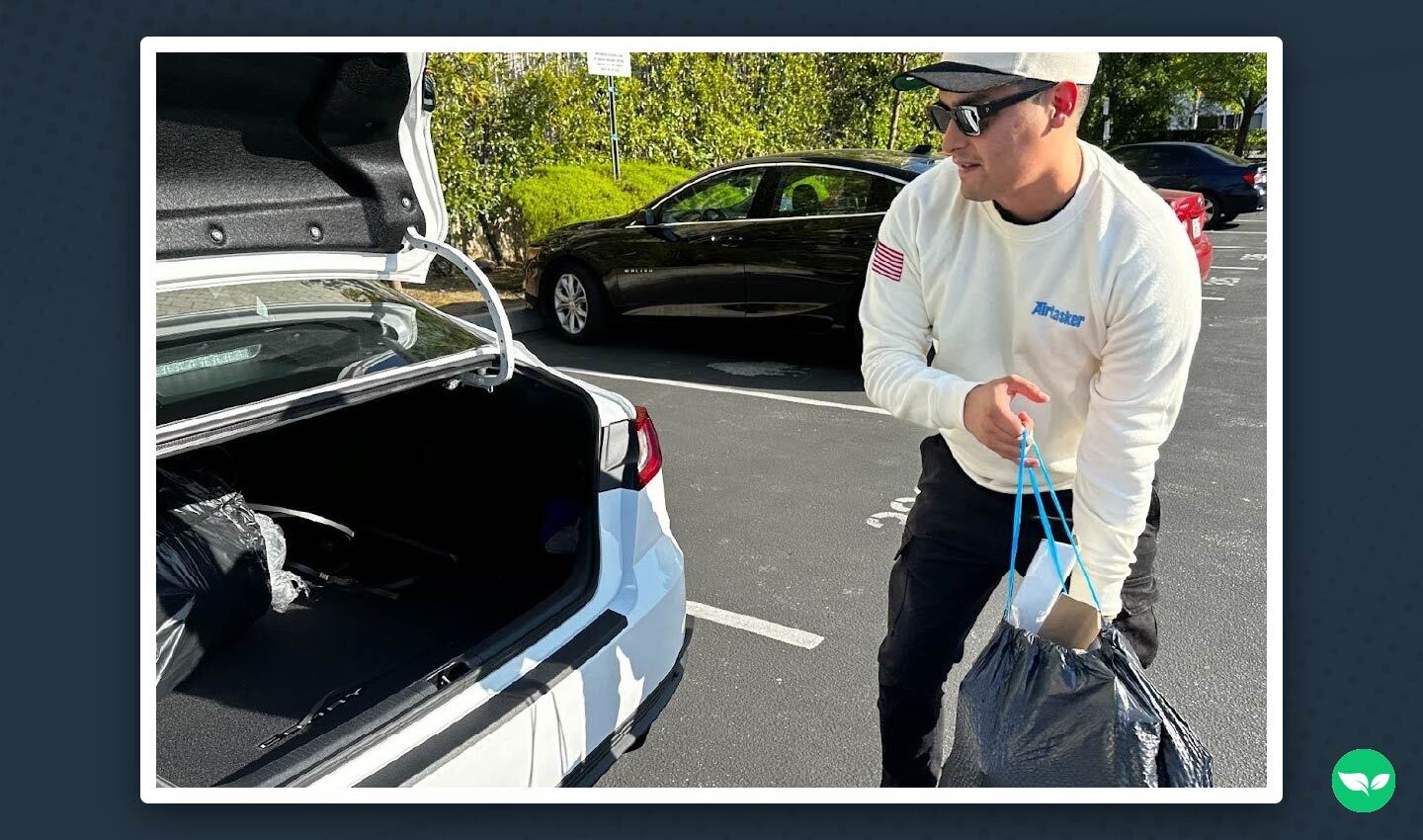
“A lot of people overlooked flyering because it sounded old school,” he said. “But local businesses still needed it — and if you could do it right, they’d keep coming back.”
His clients have included restaurants, small shops, and real estate agents promoting open houses or listings. One even hired him to post missing person flyers across multiple neighborhoods.
As demand picked up, Martin realized he couldn’t keep up on his own. That’s when he began building a small team — about 15 people in total — to help with flyer distribution. He coordinated weekly pickups, tracked assignments, and made himself available to answer questions.
“We meet every Tuesday for a couple hours,” he said. “Everyone grabs their stack of flyers, and I make sure they have what they need. I still do flyering myself, too — I like to stay in it.”
Martin’s workdays usually start around 8:00 AM and run into the late afternoon. A high-volume day might include four to six jobs, with earnings ranging anywhere from $400 to $1,000, depending on how things stack up.
Related: She Earns $2,000 a Month Doing Laundry from Home — Here’s How
How He Turns One-Off Gigs Into Long-Term Income
Martin said the biggest reason he’d been able to turn flyering into a reliable $1,000/week hustle was that he treated every task like the start of a long-term relationship — not just a quick one-off gig.
He was careful about which jobs he took and said he’d learned to spot the red flags most new Taskers missed.
Instead, he filtered for jobs with clear instructions, fair pay, and repeat potential. Many of his best clients now booked him weekly or monthly — and most of those started from a single, well-executed task.
To stay efficient, Martin batched his tasks by location. He avoided crossing town multiple times in a day, which cut down on gas, parking issues, and time lost in traffic.
“I planned routes in advance,” he said. “If I had a job in Echo Park, I’d try to stack a second or third task nearby before moving to a different part of the city.”
Clear communication, he said, is an underrated but critical part of the job. He always confirmed task details early through Airtasker’s messaging tool — especially when working with a new client.
“A lot of cancellations or bad reviews came from confusion,” he said. “If you just checked in, said what time you’d be there, and followed up after, most people were super easy to work with.”
A weekly income target — usually around $1,000 — kept him focused and gave structure to his weekly planning. On weeks when flyer work slowed down, he filled in the gaps with errands, dog walking, or other quick tasks from familiar clients who’d hired him before.
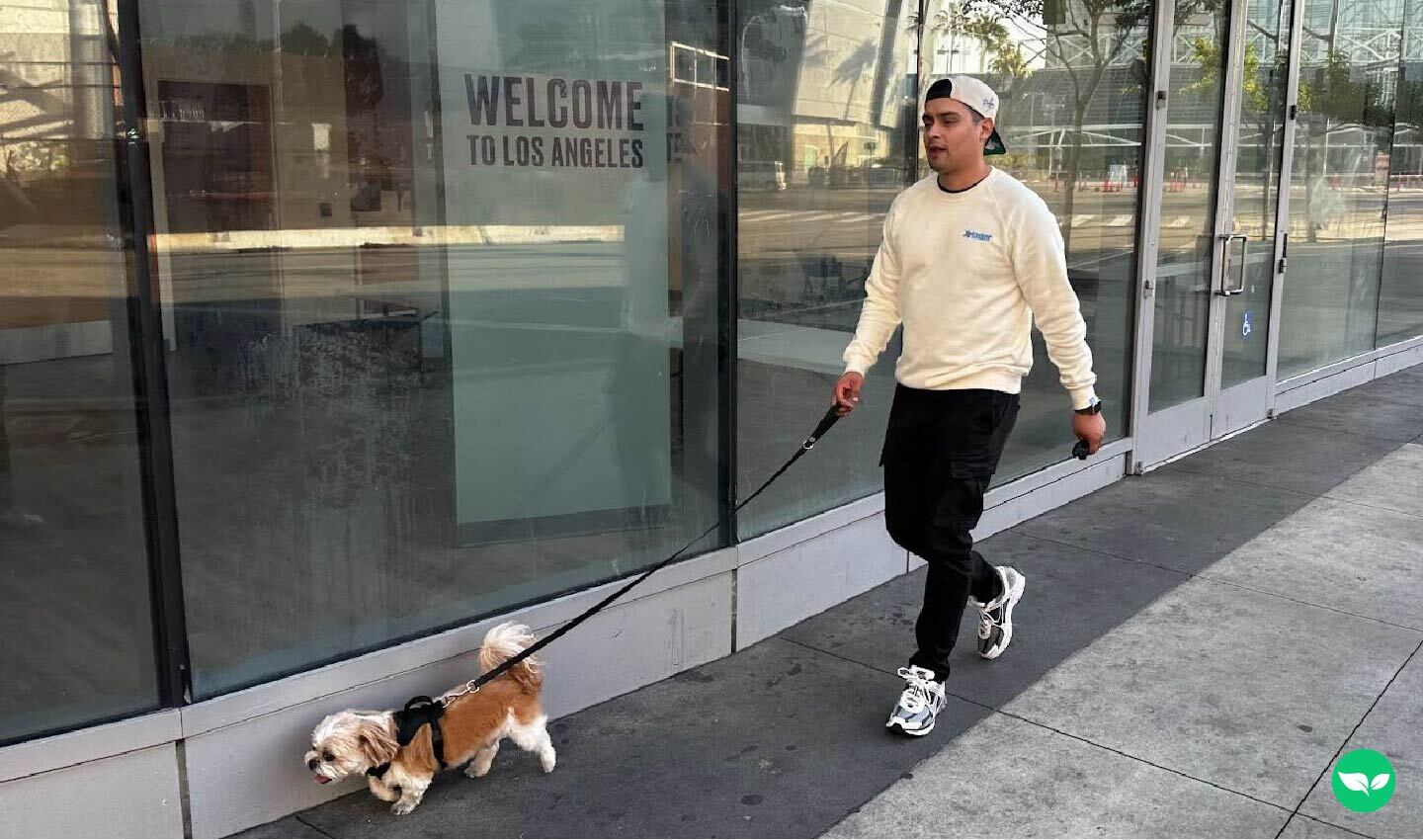
Over time, his Airtasker profile filled with five-star reviews, which helped him stand out when bidding on jobs. He didn’t always offer the lowest price, but he said clients often chose him anyway because of his reliability.
“A lot of people were just doing this for fast cash,” he said. “But if you showed up, did what you said, and stayed professional, you’d get booked again and again.”
💡 Pro Tips: How to Maximize Your Airtasker Income
- Be selective with tasks. Look for jobs with clear instructions, fair pay, and long-term potential. Skip vague tasks — they’re rarely worth your time.
- Batch by location. Group nearby gigs to cut down on travel time, gas, and parking hassles. More efficiency = more earnings.
- Plan around an income goal. Martin aims for $1,000/week and fills gaps with quick tasks when flyer jobs slow down.
- Use offer notes + follow-ups. Highlight your experience when bidding, and send a quick “let me know if you need anything else” after. It encourages repeat work.
- Stand out with consistency. Five-star reviews, fast replies, and detailed task notes matter more than offering the lowest price.
- Have a “float zone.” Leave time to pick up small, fast gigs in one area if they pop up. It helps fill slow days without overcommitting.
What This Hustle Has Made Possible
For Martin, this side hustle hasn’t just been about making money — it’s been about having more say in how he spends his time.
He picks his own hours. He decides how much work to take on. And if he wants to scale up or slow down, he doesn’t need to ask anyone’s permission.

“It’s a good feeling to not have to answer to anyone,” he said. “I can set my own pace — and I know the money will be there if I want to go after it.”
That flexibility has helped him stay consistent — and build something sustainable, not just a quick hustle. These days, when new jobs come in, Martin can either take them on himself or route them through his small team — giving him the option to grow or pull back, depending on what life throws at him.
While he’s not trying to build a brand or hire a staff, he said he’s proud of what he’s created — and he’s open to wherever it might lead.
“Right now, it works,” he said. “And if it keeps working, I’m good with that.”
Related:
- Top 50 Side Hustle Ideas to Earn Extra Income
- How One Woman Earns $300/Mo Promoting Brands on Social Media
- How This College Student Built a $500K Vending Machine Business

